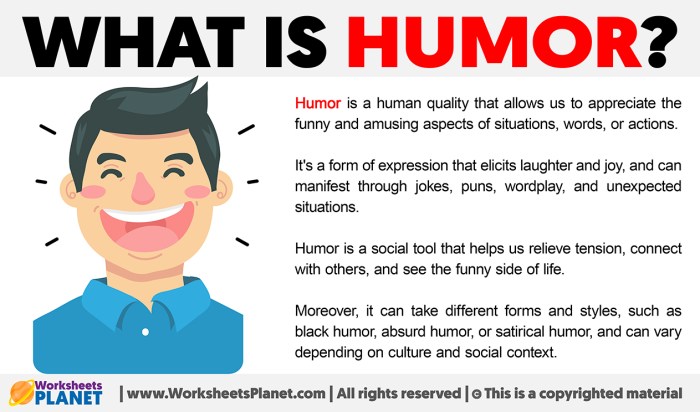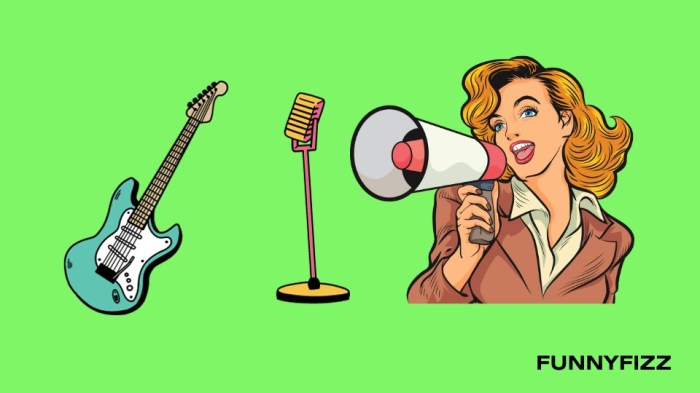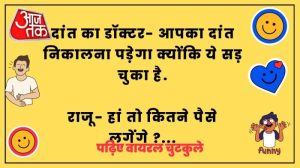
From the slapstick silent films of Charlie Chaplin to the viral memes dominating our social media feeds, humor in popular culture has undergone a wild and wacky evolution. This journey through comedic history explores the shifting trends, diverse styles, and powerful social impact of laughter across decades. We’ll delve into the anatomy of a joke, examining different comedic techniques and how they’ve been used to entertain, provoke, and even inspire change.
Get ready to chuckle your way through an analysis of how societal shifts, technological advancements, and the ever-evolving tastes of audiences have shaped what makes us laugh. We’ll uncover the secrets behind the success of iconic comedic figures, the rise and fall of comedic trends, and the surprising ways humor reflects and influences our world.
Historical Trends in Pop Culture Humor
Humor in popular culture is a constantly evolving reflection of societal values, anxieties, and technological advancements. What was considered hilarious decades ago might now seem outdated, offensive, or simply unfunny. This evolution is driven by shifts in social norms, political climates, and the ever-changing landscape of media consumption.
The dominant comedic styles have undergone a significant transformation from the mid-20th century to the present day. Analyzing these changes reveals not only the shifting tastes of audiences but also broader societal shifts in attitudes towards race, gender, politics, and technology.
A Comparison of 1950s and 2010s Humor
The 1950s, a period of post-war optimism and conformity in the United States, saw humor largely characterized by clean, family-friendly sitcoms and vaudeville-inspired routines. Think of shows like “I Love Lucy” – slapstick, situational comedy with a focus on relatable everyday life, albeit within a very specific, idealized societal context. Jokes often revolved around mild misunderstandings, physical comedy, and witty banter, avoiding controversial topics.
Political satire, if present, was often subtle and aimed at avoiding direct confrontation.In stark contrast, the 2010s witnessed a rise in dark humor, cynicism, and self-aware comedy. Shows like “BoJack Horseman” and “Rick and Morty” exemplify this shift, tackling complex themes like depression, addiction, and existential dread with a blend of absurdity and poignant social commentary. The internet and social media played a significant role, fostering a culture of irony, meme-based humor, and a willingness to push boundaries in terms of what is considered acceptable comedic material.
Political satire became far more overt and often deeply cynical.
Societal Influences on Humor
The changing landscape of social norms profoundly impacts the types of humor deemed acceptable or popular. The 1950s’ emphasis on conformity and traditional family values dictated the relatively tame nature of humor. The Civil Rights Movement and subsequent social upheavals of the 1960s and 70s led to a rise in more politically charged and socially conscious comedy, challenging existing power structures and addressing previously taboo subjects.
The feminist movement, LGBTQ+ rights movements, and other social justice movements have further shaped the evolution of humor, leading to increased representation and a critical examination of stereotypes and biases. The rise of the internet and social media democratized humor production and consumption, allowing for a wider range of voices and perspectives to be heard, though also leading to challenges around online harassment and the spread of misinformation.
Timeline of Key Moments and Shifts in Pop Culture Humor
| Year | Style | Example | Societal Context |
|---|---|---|---|
| 1950s | Clean Sitcom, Vaudeville | “I Love Lucy” | Post-war optimism, conformity, traditional family values |
| 1960s-70s | Counter-culture, Social Satire | “The Smothers Brothers Comedy Hour” | Civil Rights Movement, anti-war sentiment, social upheaval |
| 1980s | Yuppie Humor, Slapstick | “Three’s Company” | Reagan era, economic prosperity (for some), materialism |
| 1990s | Self-aware, Cynical, Observational | “Seinfeld” | Postmodernism, ironic detachment, social commentary |
| 2000s | Reality TV Humor, Mockumentary | “The Office” (US) | Increased media saturation, reality TV dominance, blurring of fiction and reality |
| 2010s | Dark Humor, Cynicism, Internet Memes | “Rick and Morty,” “BoJack Horseman” | Social media, internet culture, anxieties about the future, increased awareness of mental health issues |
Types of Humor in Pop Culture
Pop culture is a vast and ever-evolving landscape, and humor plays a crucial role in its success. From witty sitcoms to viral memes, laughter connects us and shapes our cultural understanding. Understanding the different types of humor used in popular entertainment allows us to appreciate the craft of comedy and its impact on society. This section will explore several key types of humor, providing examples and discussing their effectiveness.
Slapstick Humor
Slapstick comedy relies on physical humor, often involving exaggerated movements, pratfalls, and silly violence. Its effectiveness stems from its universality; the visual nature of slapstick transcends language barriers, making it accessible to a wide audience. The comedic timing is crucial, amplifying the absurdity of the situation. Examples include the Three Stooges’ chaotic antics, the physical comedy of Charlie Chaplin, and even modern examples in cartoons like “Tom and Jerry” where the characters’ misfortunes are visually hilarious.
The success of slapstick depends on the execution – a well-timed stumble can be uproarious, while a poorly executed one can fall flat.
Satire
Satire uses humor to criticize societal norms, political figures, or institutions. It often employs irony, sarcasm, and exaggeration to expose flaws and provoke thought. The effectiveness of satire hinges on its ability to be both funny and insightful. Examples include the television show “South Park,” which satirizes American culture and politics, the films of Armando Iannucci (like “In the Loop”), which satirize political bureaucracy, and the satirical writings of Jonathan Swift.
The success of satire depends on the audience’s understanding of the target and the sharpness of the wit. A poorly executed satire can be seen as preachy rather than humorous.
Dark Humor
Dark humor tackles taboo subjects like death, disease, or violence, often using irony or sarcasm to make light of grim situations. Its effectiveness lies in its ability to confront uncomfortable truths in a surprising and often cathartic way. However, it requires a delicate balance; if not handled well, it can be offensive. Examples include the stand-up comedy of Bill Hicks, who often used dark humor to address social and political issues, the television series “BoJack Horseman,” which explored depression and self-destruction with dark humor, and the film “Dr.
Strangelove,” which satirized the Cold War with dark comedic undertones. The success of dark humor relies on the audience’s willingness to engage with the taboo subject matter and the comedian’s skill in navigating sensitive topics.
Observational Humor
Observational humor focuses on everyday situations and experiences, finding humor in the mundane and relatable. Its effectiveness comes from its ability to connect with the audience on a personal level; everyone has experienced awkward social encounters or frustrating daily routines. Examples include the stand-up comedy of Jerry Seinfeld, whose routines often revolve around everyday observations, the sitcom “Seinfeld,” which also built its humor on observational comedy, and many viral social media posts that highlight the absurdities of daily life.
The success of observational humor depends on the keen observation of the comedian and the audience’s recognition of the shared experience.
Absurdist Humor
Absurdist humor embraces the illogical and nonsensical. It often defies expectations and logic, creating humor from the unexpected and the surreal. Its effectiveness lies in its ability to subvert traditional comedic structures and challenge the audience’s perception of reality. Examples include the works of Monty Python, whose sketches often feature bizarre scenarios and non sequiturs, the television show “Mr.
Show,” which was known for its surreal and experimental humor, and many surrealist memes found on platforms like Reddit and Tumblr. The success of absurdist humor depends on the audience’s willingness to suspend disbelief and embrace the absurdity.
- Slapstick: Exaggerated physical comedy. Example: The Three Stooges.
- Satire: Uses humor to criticize society. Example: “South Park”.
- Dark Humor: Finds humor in taboo subjects. Example: Bill Hicks’ stand-up.
- Observational Humor: Focuses on everyday experiences. Example: Jerry Seinfeld’s stand-up.
- Absurdist Humor: Embraces the illogical and nonsensical. Example: Monty Python.
Humor’s Role in Social Commentary
Humor, a seemingly frivolous element of popular culture, often serves as a powerful tool for social and political commentary. By employing satire, irony, and wit, comedians and artists can dissect complex issues, challenge societal norms, and spark crucial conversations that might otherwise be ignored or suppressed. This ability to make the serious funny, and the absurd relatable, allows humor to bypass traditional forms of discourse and reach a broader audience, fostering critical thinking and potentially driving social change.
The use of humor in social commentary is a long-standing tradition, evident across various mediums from ancient satirical plays to modern-day stand-up routines and late-night television shows. It allows for the exploration of sensitive topics without being overly didactic or preachy. The comedic framing can disarm audiences, making them more receptive to challenging perspectives and prompting self-reflection on their own beliefs and biases.
Satirical Humor in Popular Culture
Satirical humor, a form of comedy that uses irony, exaggeration, and ridicule to expose and criticize societal flaws or political injustices, is particularly effective in social commentary. Shows like “The Daily Show” and “Last Week Tonight with John Oliver” exemplify this, consistently targeting political figures and policies with witty commentary and insightful analysis. Their success lies in their ability to blend sharp criticism with engaging humor, making complex political issues accessible and relatable to a mass audience.
Similarly, animated sitcoms like “South Park,” while often crude, have used their platform to tackle sensitive issues like religion, politics, and social inequality, often prompting heated debates and fostering public discourse. The comedic style, while abrasive, allows for a critical examination of these issues without alienating the viewer entirely.
The Impact of Satirical Humor on Public Discourse
The impact of satirical humor on public discourse is undeniable. By highlighting hypocrisy and absurdity, satirical works can shift public perception and influence political agendas. For instance, Jon Stewart’s persistent criticism of the Iraq War on “The Daily Show” is widely considered to have contributed to growing public skepticism towards the conflict. Moreover, the viral spread of satirical memes and videos on social media demonstrates the power of humor to disseminate information and shape public opinion rapidly.
However, it is crucial to acknowledge that the effectiveness of satirical humor is dependent on various factors, including the target audience’s pre-existing beliefs and the overall political climate. While it can be a catalyst for positive social change, it can also be misused to spread misinformation or reinforce existing biases.
Comparative Analysis: “The Daily Show” and “South Park”
“The Daily Show” and “South Park,” while vastly different in style and tone, both effectively utilize humor for social commentary. “The Daily Show,” through its news satire format, meticulously dissects political events and policies, offering insightful commentary and exposing hypocrisy. Its approach is more sophisticated and relies on witty wordplay and ironic juxtapositions. In contrast, “South Park” employs a more abrasive, often shocking, style of satire.
It tackles controversial topics head-on, using outrageous scenarios and crude humor to expose societal flaws and challenge norms. While “The Daily Show” targets a more politically engaged audience, “South Park” reaches a broader demographic, often sparking debate and controversy through its provocative content. Both, however, demonstrate the power of humor to engage audiences with complex social and political issues, prompting reflection and stimulating conversation.
The Influence of Media on Humor
The evolution of humor is inextricably linked to the evolution of media. Different platforms, with their unique constraints and affordances, shape not only
- what* is considered funny but also
- how* it’s delivered and consumed. From the carefully crafted jokes of a sitcom to the rapid-fire wit of a stand-up routine and the instantly shareable absurdity of a meme, the medium profoundly influences the comedic style. This section will explore the impact of television, film, and the internet on the landscape of popular humor.
Television’s Influence on Humor
Television, particularly sitcoms, has a long history of shaping comedic trends. The constraints of the medium—a consistent time slot, commercial breaks, and a target audience—have led to the development of specific comedic styles. Sitcoms often rely on formulaic structures, repetitive gags, and relatable characters to create a predictable, yet comforting, comedic experience. Think of the classic sitcom laugh track, a deliberate manipulation of audience response, reinforcing what the producers deem funny.
The reliance on visual gags and physical comedy is also prevalent, a result of the visual nature of the medium. Conversely, the limitations of time often mean jokes need to be concise and easily digestible, favoring broad humor over nuanced satire. Shows like
- Friends* and
- Seinfeld*, for example, typified this style, establishing tropes and comedic formulas that are still imitated today.
Film’s Influence on Humor
Film offers a broader canvas for comedic expression than television. With longer runtimes and a larger budget, filmmakers can explore more complex narratives and a wider range of comedic styles. This allows for more sophisticated forms of satire, dark humor, and character-driven comedy. The visual storytelling capabilities of film also allow for a greater reliance on visual gags and cinematic techniques to enhance the comedic effect.
Compare the slapstick comedy of early silent films to the more nuanced and often cynical humor of modern comedies like
- The Big Lebowski* or
- In Bruges*. The difference highlights how film’s evolution has paralleled the development of more sophisticated comedic sensibilities.
Stand-Up Comedy Versus Sitcom Comedy
Stand-up comedy and sitcom comedy represent distinct approaches to humor. Stand-up is typically characterized by a more improvisational and personal style, often relying on observational humor, social commentary, and self-deprecating jokes. The comedian’s direct interaction with the audience allows for a dynamic and responsive comedic experience. Sitcoms, on the other hand, are scripted and rely on character-driven narratives and recurring gags.
The audience’s response is largely predetermined by the editing and the laugh track. While both forms utilize various comedic techniques, their delivery and relationship with the audience are fundamentally different. The intimacy of stand-up contrasts with the broader appeal and established format of sitcoms.
Social Media’s Role in Humor
Social media has revolutionized the creation and dissemination of humor. The low barrier to entry and the immediate feedback loop have fostered a participatory culture where users actively create, share, and remix comedic content. Memes, viral videos, and short-form comedic content thrive in this environment. Social media algorithms amplify popular trends, accelerating the spread of humorous content and shaping what becomes widely recognized as “funny.” This participatory nature also allows for a more diverse range of comedic voices and styles to gain prominence, challenging traditional gatekeepers of humor.
The rapid evolution of online humor reflects the dynamic and ever-changing nature of the digital landscape.
Comparative Table: Humor Styles Across Media Platforms
| Media Platform | Dominant Humor Style | Examples |
|---|---|---|
| Television (Sitcoms) | Situational comedy, slapstick, recurring gags, observational humor | *Friends*,
|
| Film | Slapstick, satire, dark humor, character-driven comedy, parody | *Monty Python and the Holy Grail*,
|
| Internet (Social Media) | Memes, viral videos, absurdist humor, dark humor, relatable content | Drakeposting meme, Distracted Boyfriend meme, various viral TikTok videos |
Entertainment & Humor
Humor is the secret sauce of entertainment, the element that transforms a passive experience into an active, engaging, and often unforgettable one. It’s not merely a garnish; it’s a fundamental ingredient that enhances enjoyment, fosters connection, and elevates the overall impact of any entertainment medium. Without humor, even the most compelling narratives can fall flat, leaving audiences unmoved and quickly forgotten.Humor’s ability to make entertainment memorable stems from its capacity to trigger strong emotional responses, primarily laughter, but also surprise, empathy, and even a cathartic release of tension.
These emotions create lasting impressions, making the experience more vivid and readily recalled. Furthermore, humor can serve as a powerful tool for building rapport between the audience and the entertainment, fostering a sense of shared experience and creating a deeper emotional connection.
Humor Enhances Storytelling
Effective storytelling relies on building tension, releasing it, and then rebuilding it again. Humor provides a natural mechanism for this process. Consider the comedic relief often found in dramatic films or plays. A witty remark or a slapstick moment can momentarily alleviate the weight of a serious situation, allowing the audience to breathe before the narrative plunges back into conflict.
This rhythmic interplay between tension and release keeps the audience engaged and prevents the story from becoming overly heavy or predictable. For example, in Shakespeare’s tragedies, comedic characters often provide this crucial counterpoint, preventing the drama from becoming overwhelmingly bleak. The witty banter of the Fool in King Lear, while seemingly unrelated to the main plot, offers a crucial emotional reprieve for both the characters and the audience.
Humor in Character Development
Humor is also a powerful tool for creating memorable and relatable characters. By showcasing a character’s sense of humor, writers reveal aspects of their personality, values, and worldview. A character’s jokes, their reactions to humor, and their comedic timing all contribute to their overall portrayal. The sarcastic wit of Sherlock Holmes in the original stories, for example, reveals his intelligence and his somewhat aloof personality.
Conversely, a character’s lack of humor can also be revealing, highlighting their seriousness or perhaps their emotional detachment. The stark contrast between the humorless demeanor of a villain and the witty repartee of the hero further emphasizes their opposing natures.
Humor and Audience Connection
Humor acts as a bridge between the creators of entertainment and their audience. It fosters a sense of shared understanding and intimacy, creating a feeling of camaraderie between those presenting the entertainment and those consuming it. This connection can be achieved through various means, from self-deprecating humor to inside jokes that resonate with a specific audience. The success of sitcoms often hinges on this ability to connect with the audience through relatable humor, creating a sense of shared experience that transcends the screen.
The enduring popularity of shows like “The Simpsons,” for instance, stems partly from their ability to use humor to explore universal themes and experiences in a way that feels both witty and intimately familiar.
Comedic Techniques and Emotional Responses
Different comedic techniques evoke specific emotional responses. Slapstick comedy, for instance, often relies on physical humor to elicit laughter through surprise and a sense of the absurd. Wit, on the other hand, utilizes wordplay and clever observations to stimulate intellectual amusement. Satire, meanwhile, uses humor to critique societal norms and provoke thought, potentially eliciting both laughter and a sense of unease or empathy.
The use of irony can create surprise and even a degree of discomfort, highlighting the gap between expectation and reality. These varied techniques, when skillfully employed, create a multifaceted comedic experience that caters to a wide range of emotional responses. Consider the stark difference between the physical comedy of a Charlie Chaplin film and the satirical wit of a Jon Stewart monologue; both employ humor, but they achieve different effects through distinct approaches.
The Cultural Impact of Specific Comedic Figures

The landscape of comedy has been profoundly shaped by a select few individuals whose innovative styles and enduring appeal have left an indelible mark on popular culture. These comedic pioneers not only entertained audiences but also influenced subsequent generations of comedians, pushing boundaries and redefining what humor could be. Examining the impact of three such figures – Charlie Chaplin, Richard Pryor, and Lucille Ball – reveals the diverse ways humor can reflect, challenge, and shape societal norms.
Charlie Chaplin’s Impact on Silent Film Comedy and Physical Humor
Charlie Chaplin, the iconic silent film star, revolutionized comedy through his masterful use of physical humor and visual storytelling. His character, “The Tramp,” a lovable underdog navigating the harsh realities of early 20th-century life, resonated deeply with audiences worldwide. Chaplin’s comedic genius lay in his ability to convey a vast range of emotions—from pathos to slapstick—without uttering a single word.
His meticulously crafted routines, combining precise physical movements with expressive facial expressions, established a template for physical comedy that continues to influence performers today. His impact extends beyond simple slapstick; Chaplin’s work often incorporated social commentary, subtly criticizing societal inequalities and the dehumanizing effects of industrialization.
Richard Pryor’s Influence on Observational and Socially Conscious Comedy
Richard Pryor, a groundbreaking stand-up comedian, dramatically shifted the landscape of comedy in the latter half of the 20th century. He fearlessly tackled controversial subjects—race, sex, drugs, and politics—with unflinching honesty and razor-sharp wit. Pryor’s observational humor, rooted in his personal experiences and observations of the world around him, resonated powerfully with audiences who saw themselves reflected in his vulnerability and unflinching self-deprecation.
He pioneered a style of stand-up that was both intensely personal and socially conscious, paving the way for future generations of comedians to address sensitive topics with both humor and insight. His influence can be seen in the work of countless comedians who use their platforms to address social issues and personal experiences.
Lucille Ball’s Contribution to Sitcom and Television Comedy
Lucille Ball, a pioneering figure in television, redefined sitcom comedy with her iconic portrayal of Lucy Ricardo inI Love Lucy*. Her comedic timing, physicality, and ability to create relatable characters established a new standard for television humor. Ball’s influence extended beyond her on-screen persona; she was also a highly influential producer and businesswoman, demonstrating the power of female leadership in a male-dominated industry.
Her work helped establish the sitcom as a dominant form of television entertainment, influencing generations of sitcom writers and performers. Her influence on the structure and style of sitcoms is undeniable, with her emphasis on relatable situations and character-driven humor setting the stage for countless shows that followed.
Visual Representation of Comedic Figures and Their Impact
Imagine a triptych. The left panel depicts Charlie Chaplin, his Tramp costume instantly recognizable. The image emphasizes his physical comedy – a slightly exaggerated stumble, a mischievous glint in his eye, and a poignant expression hinting at both humor and underlying sadness. This section uses muted tones reflecting the era of silent film. The central panel showcases Richard Pryor, in a close-up shot highlighting his expressive face and intense gaze.
The image uses brighter, more vibrant colors reflecting his bold and confrontational style of comedy. The right panel shows Lucille Ball, perhaps mid-laugh, her expression conveying both mischief and genuine joy. The colors are bright and cheerful, reflecting the optimism and lightheartedness of her sitcom work. Below each panel, short captions summarize their key characteristics: Chaplin – “Physical Comedy, Social Commentary”; Pryor – “Observational Humor, Social Consciousness”; Ball – “Sitcom Pioneer, Relatable Characters.” The overall visual effect communicates the diversity and lasting impact of these three comedic giants.
Closing Summary

So, the next time you burst out laughing at a viral video, a witty sitcom line, or a stand-up comedian’s punchline, remember the rich and complex history behind that guffaw. Humor in pop culture isn’t just about entertainment; it’s a mirror reflecting our society, a tool for social commentary, and a powerful force shaping our collective consciousness. It’s a testament to our shared humanity and a constant source of joy, even amidst the chaos.
Prepare to see pop culture humor in a whole new light!
Clarifying Questions
What’s the difference between satire and parody?
Satire uses humor to criticize societal issues, while parody mimics a specific work for comedic effect.
How has the internet changed comedy?
The internet democratized comedy, allowing anyone to create and share content, leading to the rise of viral memes and new comedic styles.
Why is dark humor so popular?
Dark humor allows us to confront uncomfortable topics in a safe, often cathartic, way, finding humor in the macabre.
Are there any ethical considerations when using humor in social commentary?
Yes, care must be taken to avoid perpetuating harmful stereotypes or causing offense while making a point.






